Diversifying the Curriculum, A Perspective
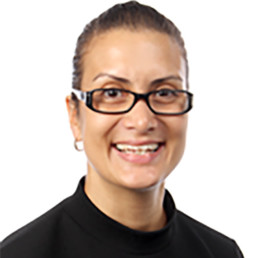
Written by Diana Ohene-Darko
Assistant Head, Pinner Park Primary School; Interim Deputy Headteacher, Holy Trinity Primary School, Finchley; Senior Consultant, Educating for Equality.
Currently, I work in a large London primary school as an Assistant Headteacher. I am a champion for, and have worked extensively on, equality education and children’s rights. We are in a great time of momentum in advocating for racial justice in education. I want to see a curriculum that reflects all the children and families we serve so that there is an inherent sense of identity and belonging.
Introduction
This article aims to shed light on the current situation with regard to race relations in education and diversifying the curriculum. Is diversifying it enough? Considering key documents and events, the article outlines what can be done in order for diversification of the curriculum to take place, or even before it takes place. I offer a perspective on celebrating and appreciating the pupils and staff we serve, rather than ‘tolerating’ each other. In essence, diversity needs to go mainstream.
In May 2020, George Floyd was brutally murdered, and the world was watching. His death sparked a global movement for change, not just for equality but also for equity of outcomes for Black people and people of colour—the global majority1.
In the UK, over 92% of Headteachers are White (DfE, 2021) serving a nationally diverse population. Before even thinking about diversifying, or indeed decolonising the curriculum, there has to be groundwork done in so far as personal reflection for unconscious bias across educational institutions as a whole and for practitioners individually. Time, hard work and commitment are needed to address issues of bias towards the global ethnic majority here in the UK, other disadvantaged groups and those belonging to protected characteristics. Race relations are at a pivotal point in education. Addressing biases is vital to ensuring at least a reasonable understanding of, and appreciation for, all people—and it is about time. By addressing unconscious biases and diversifying the curriculum, education can create a culture of belonging where each individual is celebrated for who they are, rather than being tolerated.
A call for change
It is not enough to say that there are ‘negative calls for decolonising the curriculum’ (Sewell, 2021). No longer can racism be tolerated. No longer can discrimination go unnoticed. No longer can micro-aggressions go unchallenged. Protected characteristics are protected for a reason- they safeguard who we are, our very core of being. Being protected by law carries weight and should be upheld.
How will each child leave school better than when they came? What ‘suitcase’ of learning will they leave with, having spent years in education, ready to travel the world with? How does a child of faith feel represented in the curriculum, for example? What about those from a disadvantaged background? A one-parent family? Those with same-sex parents? How does the curriculum seek to represent the broader population of Britain in all its glory of cultures, ethnicities, traditions, languages and families? Where do children belong? How do educational settings foster a sense of belonging that sees children and young people feel completely at home and at peace with who they are to erase the question of, ‘Where are you from?’ Or worse in response to ‘I was born here’, ‘No but where are you really from?’ In order to demonstrate that we, as practitioners value our learners, the curriculum needs to be ‘truly national’ (Alexander et al. 2015).
The current picture
Some schemes have already sought to address the issue of wider representation, such as the Jigsaw PSHE scheme (2021) and the Discovery RE (2021) programme. In their provision, they offer examples of different families and scenarios that are inclusive of wider society. Some schools are already making headway by creating their own learning journeys for children and young people. They offer urban adventure curricula, for example, and use the new [EYFS] reforms as a basis by which to advance already good practice with a specific focus on what exactly they want children to experience and achieve in order that they become well-rounded individuals, including talking about race. One example of this is Julien Grenier’s extensive work on curricular goals which see children learning to sew a stitch, ride a balance bike and bake a bread roll in Nursery. All aspirational, real-life outcomes for children, no matter their race, background or socio-economic class. On the face of it, there seems no link to race. However, by setting the bar high for all children at the same time, education is, in fact, providing an equality-first experience for our young ones where no learner is left behind.
Consideration of history
The National Curriculum of 1999 (Key Stages One and Two) sought to allow,
‘schools to meet the individual learning needs of pupils and to develop a distinctive character and ethos rooted in their local communities,’ (1999, pp.12).
Then came the (Primary) National Curriculum of 2014 which called for a curriculum that was ‘balanced and broadly based’ (2013, pp.5) promoting the development of the whole child and where teachers were to ‘take account of their duties’ (pp.8) where protected characteristics were concerned. The difficulty is, there are so many unconscious biases at play that even before a diverse curriculum can be devised, attitudes and unconscious biases must be addressed in the first instance as part of initial teacher-training and as part of the wider continuing professional development provision in schools.
The murder of Stephen Lawrence in April 1993 sparked a national debate around race and the impact of structural and institutional racism here in the UK, namely in the police force. As part of its findings, the Stephen Lawrence Inquiry Report (1999), stated that education should value cultural diversity and prevent racism ‘in order better to reflect the needs of a diverse society’ (Macpherson Report, 1999 pp. 382).
With a curriculum that spans British history across both primary and secondary phases, the representation of a generation of Commonwealth workers, including the Windrush generation, who came to help re-build our country post war is barely, if at all, represented. The ‘broad and balanced’ curriculum is one of a vastly colonial view, rather than the narratives of those enslaved as well as those who enslaved others. The same is true for the British rule in India and the impact for Indian citizens and the thousands of soldiers of colour from the Commonwealth who fought for Britain in the Second World War. There is gross under-representation of people of colour and their significant contribution to the British Empire as a whole.
Bringing education into the 21st century
More than twenty-eight years on from Stephen Lawrence and with the brutal murder of George Floyd on 25th May 2020, there is now widespread debate in education once again about the curriculum on offer and how to diversify it. But is diversifying it enough? It seems that colonial attitudes need to be addressed perhaps before diversifying the curriculum. Tackling unconscious (or even conscious) bias, white privilege, micro-aggressions and direct racism may come to be more effective, in other words, decolonising attitudes before decolonising the curriculum.
In the book, ‘I Belong Here, A Journey Along the Backbone of Britain’, the author writes openly about belonging and the ‘deep loneliness and isolation that can affect mental health’ without that sense of belonging (Sethi, 2021). This is in reflective reference to a racist attack she suffered in public as well as countless micro aggressions. Deeply engrained and entrenched racist attitudes need to be challenged. Micro-aggressions need to be challenged. Why? Because it is the right thing to do. The book weaves a narrative that calls for the work needed to be done in order to address micro-aggressions and the wider, long-lasting impact these have on those individuals who suffer them. Equality is everybody’s responsibility.
Imagine how children feel when they do not see themselves reflected in the curriculum- in books and resources, in texts and images, in the learning. There is a deep cavity indeed for children and families of colour. Despite being a global ethnic majority, their experience of the curriculum is all too often white Eurocentric; more specifically that of white, middle-class men, ‘male, pale and stale voices that need to be banished’ (Sperring, 2020 pp. 3).
In order to foster a deep sense of belonging in children, the curriculum needs to address issues of race, in the first instance, as well as other protected characteristics more widely. We are living in a multi-national society with a vast array of languages, cultures and traditions. Even in areas of which can possibly be described as mono ethnic, there still needs to be a national educational commitment to addressing the racial discord that currently exists. Difference should be both appreciated and celebrated. It is not enough to simply ‘tolerate’ other faiths, traditions, beliefs, cultures, customs or backgrounds. Tolerance is such a low bar.
The Black Curriculum Report (Arday,2021) highlights the drawbacks of the current curriculum, more specifically the history curriculum, which distinctly omits Black history, ‘in favour of a dominant White, Eurocentric curriculum, one that fails to reflect our multi-ethnic and broadly diverse society.’ (pp.4). It goes further to make several recommendations, in more detail than the Stephen Lawrence Inquiry Report, for example:
‘conventions of Britishness will always require reconceptualising to incorporate all of our histories and stories. Our curriculum requires an acknowledgement of the ethnic, cultural and religious diversity that comprises the tapestry of the British landscape and the varying identities associated within this.’ (pp.5)
What it calls for is an evaluation of the curriculum to include Black history in order that there be, ‘greater social cohesion and acceptance of racial and ethnic difference’ (pp.4).
By offering a ‘broad and balanced’ curriculum that is tailored to the demographics of the school population, you are reinforcing a deep sense of identity and belonging. Children and young people will feel seen, valued and understood for who they are, not just as individuals, but as a part of their communities. How empowering for our children and young people of today!
Rather than continuing the old-fashioned approach of British history, we should be teaching children and young people to be critical thinkers, to assess and appraise the evidence and different perspectives so that they can come to their own conclusions. No longer is it adequate enough to have diversity days or Black history month; to teach just one perspective. People of colour do not just exist for one day or one month of the year. There are countless scientists, historians and academics of colour who have made huge contributions to society as we know it. For example, although Thomas Edison may have invented the lightbulb as we know it, Lewis H. Latimer made a considerable contribution towards this. However, in those days it was rare for a person of colour to be attributed with such distinguished achievement. Another example is Wangari Maathai, Nobel Peace Prize laureate, known for her environmental activism in Kenya, ‘It’s the little things that citizens do. That’s what will make the difference. My little thing is planting trees.’ (Wilson, 2018). Where are they in the national curriculum?
In the Oxford Learner’s Dictionary, ‘national’ is defined as ‘connected with a particular nation; shared by a whole nation’ (Oxford Learner’s Dictionary). If education seeks to indeed connect the nation, and if it wants education to be a shared experience as a nation, then there is more work to be done. Diversity needs to go mainstream.
Young people need to know that who they are makes a difference. Not who they are because of an out-of-date system that continues to advance the privileged few, rather, who they are without the labels that are thrust upon them. They are not their labels. They are ‘humxns’2(Ricketts, 2021) who make a valid and significant contribution every day. Diversifying the curriculum should reflect this. Decolonising attitudes is the right thing to do- creating safe spaces to open up dialogue, offering long-term quality staff training, enriching the curriculum with a broader representation of different communities, making equality training mandatory for initial teacher training.
Data from the Department of Education shows that 92.7 per cent of headteachers and 89.7 per cent of deputy and assistant headteachers in the UK are white (DfE,
2 Humxn is the gender-neutral term for human. Urban Dictionary: humxn (2021) Urban Dictionar. Available at: https://www.urbandictionary.com/define.php?term=humxn. 2021). These figures show that all-white leadership teams run the majority of schools in the country, which is not necessarily reflective of the communities they serve, or even our nation as a whole.
More needs to be done to actively recruit and retain professionals from ethnically diverse groups. For example, anonymising applications for name, age, gender and university to name a few categories; randomising responses to scenario questions and eliminating the personal statement response so that colleagues can show what they would do as opposed to what they have done, thereby showing their potential against their experience and expertise, skills and qualifications.
Conclusion
These are just a few starting points. Essentially, good, quality equality work means hard work. It means making the uncomfortable comfortable. It means braving being vulnerable. It means addressing racism head on so that attitudes can change, as well as behaviours. ‘In this world there is room for everyone’ (Chaplin, 1940). Children should leave with a rich tapestry woven from learning and experiences that celebrate who they are, that give them every chance of further success in life, that elevate them in their sense of self-worth and identity. When a child asks, ‘Where do I belong?’ you can confidently say, ‘Here.’
References
Alexander, C., Weekes-Bernard, D., & Chatterji, J. (2015) History Lessons: Teaching Diversity in and through the History National Curriculum. London: Runnymede Trust. http://www.runnymedetrust. org/ uploads/History%20Lessons%20-%20Teaching%20 Diversity%20In%20and%20Through%20 the%20
History%20National%20Curriculum.pdf.
Arday, J. (2021) The Black Curriculum, Black British History in the National Curriculum Report 2021. pp.4-5.
Charlie Chaplin, The Great Dictator speech, taken from the film, The Great Dictator (1940) available at: https://www.charliechaplin.com/en/articles/29-the-final-speech from-the-great-dictator
Department for Education (2013) The National Curriculum in England: Framework Document. Available at: https://www.gov.uk/government/
uploads/system/uploads/attachment_data/ file/210969/NC_framework_document_- _FINAL.pdf (pp.5, pp.8)
Department for Education data available at: https://www.ethnicity-facts figures.service.gov.uk/workforce-and-business/workforce-diversity/school-teacher workforce/latest
Discovery RE Scheme Of Work | Discovery RE (2021) Discovery Scheme of Work. Available at: https://discoveryschemeofwork.com/ (Accessed: 16 September 2021). Primary and Secondary PSHE lessons fulfilling RSE | Jigsaw PSHE Ltd (2021) Jigsaw PSHE. Available at: https://www.jigsawpshe.com/ (Accessed: 15 September 2021).
Macpherson Report (1999), as part of The Stephen Lawrence Inquiry available at: https://assets.publishing.service.gov.uk/government/uploads/system/uploads/attach ment_data/file/277111/4262.pdf pp.382
Oxford Learner’s Dictionary, ‘National’ definition, available at:
https://www.oxfordlearnersdictionaries.com/definition/english/national_1?q=national
Ricketts, R. (2021) DO BETTER, SPIRITUAL ACTIVISM for Fighting and Healing from WHITE SUPREMACY
Sethi, A (2021) I Belong Here: A Journey Along the Backbone of Britain. Bloomsbury, London. ISBN 9781472983930.
Sewell, T. (2021) Commission on Race and Ethnic Disparities: The Report, can be found at:
https://assets.publishing.service.gov.uk/government/uploads/system/uploads/attach ment_data/file/974507/20210331_-_CRED_Report_-_FINAL_-_Web_Accessible.pdf
Sperring, K. (2020) Decolonising the curriculum: male, pale and stale voices that need to be banished. Available at: https://uclpimedia.com/online/lets-banish-the hierarchy-topped-by-male-pale-and-stale-voices-and-decolonise-the-curriculum
The Equality Act 2010 guidance, can be found at:
https://www.gov.uk/guidance/equality-act-2010-guidance
The National Curriculum 1999 available at:
http://www.educationengland.org.uk/documents/pdfs/1999-nc-primary-handbook.pdf. pp. 10, pp.12.
Wilson, J. (2018) Young, Gifted and Black. Wide Eyed Editions. ISBN978-1-78603- 983-5.
Our Pregnancy and Maternity Toolkit for Schools
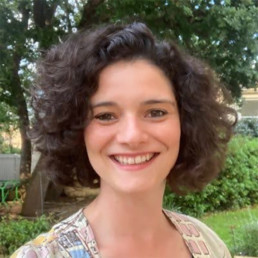
Written by Emma Sheppard
Emma founded The MTPT Project, the UK's charity for parent teachers, in 2016 when on maternity leave with her first child. She has 12 years experience as an English teacher, Lead Practitioner and ITT Lead, and now runs The MTPT Project full time.
The research, legal practice and variety of experiences surrounding the protected characteristic of pregnancy and maternity is rich and diverse, but perhaps because it does not (often) include our students in the way other protected characteristics do, resources specific to the education sector are hard to come by. We do not, for example, talk about diversifying our curriculum to include more stories of pregnancy and motherhood. We don’t talk about ensuring that our workforce includes pregnant role models for our students. We don’t organise student voice groups discussing how pregnancy and maternity affect pupils’ day to day school lives.
Provision for pregnancy and maternity as a protected characteristic is almost always in relation to staff members within our schools, nurseries and colleges. And it’s a fairly important demographic: the majority of teachers are women who may become pregnant at some point; half our workforce are parents to children under the age of 18, and 3.4% of teachers (around 11,500) go on maternity leave each year – that’s an average of two per school. But isn’t the experience of being a parent and a teacher the remit of our HR managers, rather than colleagues, middle and senior leaders?
Given the large number of parents in our teacher workforce, the protected characteristic of pregnancy and maternity – and the many years of family life that will follow – is an area about which leaders should be familiar and informed if they are keen to create positive working environments. As in any other industries, failing to understand and therefore meet the needs of our pregnant and mother team members leads to staff attrition, negative school cultures, and a motherhood penalty in the form of a gender pay gap, gender disparity in school leadership and discriminatory cultures that we present to our students as the reality that they will inherit.
The DiverseEd Pregnancy and Maternity Toolkit is an evolution of the research, resources, networks and articles that supported the establishment of The MTPT Project – the UK’s only charity for parent teachers. It provides the reports, blogs and contacts that The MTPT Project community return to again and again to inform their work and empower their community. When you start exploring, you’ll realise what a rabbit hole we have tempted you to fall into: 25 pages of an ASCL Maternity and Adoption Leave guide; ways to support breastfeeding teachers as they return to work; the experience of undergoing fertility treatment as a teacher; the ins and outs of shared parental leave; how to avoid direct and indirect discrimination… At first you may be overwhelmed by what you didn’t know you didn’t know…!
Don’t be put off: start with the needs of the colleagues in your school – whether they be expectant mothers, fathers or non-binary parents, undergoing fertility treatment, returning to work, completing professional development on leave. Use the DiverseEd toolkit to open up dialogue and get everyone feeling excited about how enjoyable making this next step in your personal and professional lives will be – learning to support, and be empowered, by your pregnant, expectant and parent colleagues.
Want to do more to support your colleagues? Contact The MTPT Project about our schools’ membership so that the experts can guide you through the relevant documents, and how to implement impactful practice in your school.
I think I too have known autumn too long
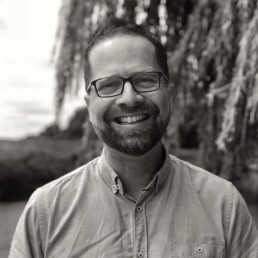
Written by Matthew Savage
Former international school Principal, proud father of two transgender adult children, Associate Consultant with LSC Education, and founder of #themonalisaeffect.
a wind has blown the rain away and blown
the sky away and all the leaves away,
and the trees stand. I think i too have known
autumn too long
(‘a wind has blown the rain away’, by e.e.cummings)
The westerly gales that frequently collide with our corner of Scotland at this time of year were so fierce last night that our front door was actually blown open. After battening it shut, I listened to the gusts howl across the moor, and began to think about the blog post I would write today.
It is difficult to read about education today without some reference to raising attainment after the disruption of the pandemic, but chasing better outcomes is hardly a new phenomenon. However, under the scrutinous spotlight of inspectorate or government, we can too easily overlook the powerful winds that buffet our students daily, influencing their learning and, even more importantly, their wellbeing far more powerfully than ever could, say, the quality of their teaching or the effectiveness of their curriculum.
These winds are manifold. Specifically, as we know, they can so easily be blown off course by their physical and mental health; by their diet, and their exercise or sleep (or lack thereof); by their media, and social media; by their peer and their family relationships; and by their identity and its complex, shifting components. Above all, however, a perfect storm of societal pressures batters each student with two prevailing winds – of performativity and normativity.
On the one hand, students receive a strong and consistent message that they must perform; indeed, their performance is measured, celebrated, prioritised and, above all, always visible. A consequence of this is that they can quickly identify their own worth in their performance, as strong a root as any for poor mental health in the future. On the other hand, students receive a contradictory message that they must be normal, and that normality is another means by which value can be conferred.
What, then, for the student who is not able, at any given time, to perform in the arena and against the criteria which have been arbitrarily allocated? And what if their own characteristics, the very building blocks of their identity, do not conform to the model that has been arbitrarily imposed? This is when many a student will choose borrowed robes, in a relentless effort to be seen to perform, to be normal, to be validated, convinced that their worth is conditional. But these robes sit heavy, and they do not fit.
A decade ago, I began to develop a concept I call #themonalisaeffect®, a data-fed, data-led approach to personalising the learning and wellbeing experience for every single student. And its mission? To ensure that each student can:
- be seen;
- be known;
- and belong.
Known and seen for who they actually are, and able, as a result, to belong, in their and our worlds. For it is with belonging that they can thrive, and, ironically, the thriving student will also be able to perform, but on their terms.
I have written at length about the unconditional love that has shaped my relationship with my own two children, because of, not despite, the characteristics they inhabit, and which the world must protect. Our schools must be places devoid of conditionality, for inclusivity, equity, justice can have no conditions. As long as the students in our schools believe that our attention, our affection and our validation are contingent on anything, we simply perpetuate an inherited paradigm. And as long as we do that, the winds will just keep blowing.
Groupthink is a trap: businesses do far better when there is diversity of thought
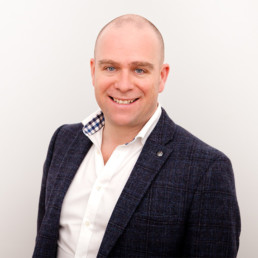
Written by Neil Bradbrook
Neil Bradbrook is managing director of Falkirk-based Ahead Business Consulting and a Fellow of the Institute of Leadership & Management.
When it comes to running a business, nothing is more important than diversity of thought. No matter how good a leader you think you are, it is the team you assemble around you that will help you succeed.
My business partner and I come from different backgrounds and that helps when we are making business decisions. We come to similar conclusions, but get there in different ways, challenging each other as we go.
It is not nearly enough, though. We might have to make the decisions, but we do not have all the answers, which is why it is so important that we listen to the team around us. Only when we hear the suggestions they are making and the solutions they are coming up with can we make a truly informed choice.
As human beings we are all social animals who like to interact and do things together. That applies in the workplace just as much as anywhere else. If you can create a working environment where people enjoy what they do and feel empowered to air their views, everybody benefits from the power of the team.
Taking on board views that differ widely from your own can be a challenge but looking at a problem from every possible angle is the way to find the best solutions. That means surrounding yourself with people from as many different backgrounds as possible rather than hiring in your own image.
That takes a conscious effort – we have all heard of unconscious bias, right? – and so self-awareness is key. No matter what position you are in – even if you are in charge of a huge global enterprise, as Elon Musk is at Tesla – you cannot ever think it is all about you. The very best senior managers are the ones that realise they might not be doing everything right.
A good manager should always be prepared to change their mind when presented with views that differ from their own. That is why listening is so important. Listen to what your employees have to say, listen to your customers, take advice. You do not have to act on every single thing but listen – and listen well – before making that call.
Trying to force people into your own mould will never work; embracing them as they are and seeking out the value they can bring, will. That can be difficult. Some team members can struggle to engage in a way you understand. They are the ones you have to invest even greater effort into listening to, because only by accepting that everyone can be part of the team will you have a truly inclusive organisation.
If you do not make an effort to show you are genuinely inclusive there are some people you are going to turn off. You will be the loser in that situation because you will be missing the opportunity to find out what they could add.
Some managers find it hard to empower the individuals in their team. That is understandable: few people are given the training they need to take on a management position, with most being promoted simply because they excelled in the role they were already in.
Without being told otherwise, it is easy to fall into the trap of thinking that with power comes responsibility and with responsibility comes the need to make all decisions alone.
But if team members feel they understand your organisation’s vision and their role within it – and that they have the autonomy and opportunity to contribute and make a difference – you get so much more out of them.
That is to everyone’s benefit. If you are all pulling in the same direction, and everyone knows what the effort is being put in for, it will be so much more effective than if you just have one or two people doing it.
I have always been a firm believer that the power of the team is far greater than that of the individual; if you get the team right, collectively you will be so much stronger than each of you on your own.
Attention Policymakers: We Need to Update the School Curriculum
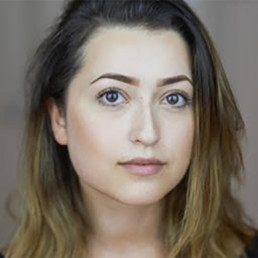
Written by Naida Allen
Naida is a writer and blogger, fuelled by coffee and dark humour. She is a mental health advocate and regularly uses her own experiences to raise awareness about social issues. Her aim is to break stigma around taboo topics and enlighten the masses through the art of words. She loves dogs, and hates the patriarchy.
Given the significant impact of the Black Lives Matter movement on the criminal justice system, it’s only natural for this event to trickle into the education system. The British school curriculum is outdated at best. It will come as no shock to know that 85% of secondary school texts studied were written by White authors. The lack of diversity is damaging both socially and educationally. The year is 2021, and we are still waiting for change.
After the murder of George Floyd, the world woke up. We could no longer stay silent; the time to take action had arrived. Amongst many deep-rooted racist issues that still exist in British society, one that became impossible to ignore was the issue with the school curriculum. Secondary school pupils across the country (and the world for that matter) are not taught the truth about the UK’s shady history. The broad lack of diversity exists across all school subjects, from English and Drama to History and Science.
Even the American K-12 curriculum lacks punch. The Coalition of Educational Justice (CEJ) in New York recently published a shocking set of statistics that puts the school curriculum to shame. Their enquiry into the lack of diversity found that 4 out of 5 books studied in English were written by a White person. Similarly, a national UK study by Penguin Books found that less than 1% of GCSE students studied a book by a writer of colour.
It goes without mentioning that it is not just Black authors and people of colour who are marginalized. No; it is also women — and worse still — Black women who are frozen out. There is rarely a platform for LGBTQ+ authors, or awareness in their struggles, which adds to the exclusion and creation of ‘otherness’.
Yet it has to be a top-down approach for us to succeed in any social change. The current school curriculum contributes to perverse attempts to sugarcoat the past, allowing White people to hold the monopoly of power. Gestures that arguably verge on tokenistic, like “Black History Month” are the bare minimum. They are designed to keep the peace, but are ultimately just performative in nature. As Jean Alexander states, “it is a game play for the survival of a democratic society”.
My message today is to the policymakers: we need to update the school curriculum. If history, implicit and institutional racism, or celebrating Black achievements are not prioritised in schools, we can assume change still sits on the backburner. Young people will only learn when we own up to our mistakes. For there to be any hope in a harmonious society, we need to right our wrongs as best we can. The optimum approach is an authentic one.
So, teach students about Britain’s role in colonialism. Explain why the prison population is overrepresented by Black people and ethnic minorities. Study fiction and non-fiction texts across all subjects written by non-white authors. Take English as an example; whilst Shakespeare is undoubtedly important for the development of language, Zora Neale Hurston’s Their Eyes Were Watching God remains underrepresented. Consider adding Zadie Smith and Reni-Eddo Lodge to the English syllabus. This will by no means erase centuries of oppression; it will, however, inspire development.
The fact of the matter is, these texts are not hard to come by. There is a long list of potential contenders written by Black women, from textbooks and fictional narratives to plays; and they are all critically-acclaimed. Why, then, are we not capitalising on this opportunity? There is no better way to teach students about human rights and social justice than directly from the horse’s mouth.
An example of where this sincerity has worked is in Germany; their school curriculum shows significantly more willingness to revisit and admit to past mistakes. Teachers will openly discuss the German role in the Holocaust and WW2; many students will at some point visit a concentration camp. At no point do they attempt to disguise their atrocities. In doing so, they are now more respected by other nations. This is how to rewrite the future.
The irony is, British schools are the first to slander Nazi Germany for their war crimes, particularly when it comes to the Holocaust. Where is this zealous attitude when documenting our own actions on the History syllabus, for example, as colonialists? Instead, students learn about what makes Britain so Great. We share how we were the first to abolish slavery, but not that explorer, John Hawkins, was the first to start the slave trade in 1562.
Reform starts in school. We cannot expect the youth of today to differ from our predecessors if we do not light the torch. For students to thrive, they need to be represented in all their diversity. It is simply not good enough for only 0.1% of pupils to study a text by a Black female author. When you do not see yourself represented, your dreams and options are extremely limited. This is what inevitably leads to apathy and missed opportunities in the community.
We need to mention the achievements and discoveries of both people of colour and Black people – scientists, mathematicians, poets, historians. For example: Madam C.J. Walker who created the first African-American hair care products; Elijah McCoy who invented the ironing board; Tu Youyou who discovered artemisinin, the treatment for malaria.
At the very least, we need to incorporate texts written by minority authors to study in the classroom. It’s important to keep current and move with the times, rather than promote a false representation of the “good old days”.
Let’s inspire all students — regardless of their gender, race, or sexuality — to know their worth. Britain as a whole needs to understand their history and address their ignorance. The only way to do any of this is through policy change; otherwise we remain stuck in bad habits. It is time to update the school curriculum.
This is not a plea. It is an order.
Aspiring Heads Leadership Summit Conference 2021

Written by Javay Welter
NPQ, MSc, Outstanding MFL teacher, public speaker, mentor and linguist.
On the 16th of October, I witnessed greatness. The Aspiring Heads Leadership Summit was phenomenal. Nadine and Ethan Bernard hosted a truly remarkable conference. Above all, this was the first leadership conference I had witnessed led by a current existing Black Headteacher, Nadine Bernard. Well done Nadine for your initiative, creating this platform and elevating future leaders. This was a pioneering conference, very timely and extremely forward-thinking.
The wide array of speakers in different fields provided a variety of perspectives and insights. Topics ranged from mentoring, strategic leadership to financial literacy. The speakers were all leaders and thought leaders in their respective fields. They shared their journey, resilience and barriers they had to overcome. The optional workshops were uplifting, insightful and edifying. I left feeling empowered, inspired and acquired so much wisdom.
The first keynote speaker Bose Onaboye, who is a business strategist and leader, spoke about finding your leadership style and being highly reflective. Leadership development is a process. She encapsulated that leadership is a journey and not a destination. Leaders are readers. Therefore, one must strive to keep developing oneself and undertake CPDs. I fully agree that leading is a journey, not just a title. We must strive for excellence.
Another charismatic speaker Karl Pupé, an educator and author, highlighted that we must step out of our comfort zone to grow. Leadership is not easy and we must embrace change to grow. We must embrace more black leaders in all walks of life and value their unique and valuable skill sets and contributions. He mentioned that his various previous jobs have helped to strengthen his behaviour management, for example, negotiation, conflict resolution and dealing with challenging behaviour. His book Action Hero Teacher: Classroom Management Made Simple is an exemplary book on behaviour management. A must-read for new teachers.
Diana Osagie, a former black Headteacher and CEO of Courageous Leadership focused on being a human first and a leader second. Well-being is key to longevity. If you do not have health, you cannot lead. Sayce Holmes Lewis, Founder and CEO of Mentivity advocated that we need more servant leaders rather than being ego-centric ones to promote positive change. We need to lead from the back like Nelson Mandela. Sayce passionately highlighted that positive black male role models are crucial and that Devon Hanson, a former black Headteacher acted as an inspiration. Lavinya Stennett, founder and CEO of the Black Curriculum pointed out that Black History should be incorporated in the national curriculum and that representation is vital to success.
The second keynote speaker, Dr Leroy Logan MBE who is a former Metropolitan Police superintendent. He was also the chair of the National Black Police Association and discussed fear. He eloquently commented that his father feared his career choice. His father suffered police brutality. However, he had seen black role models and police officers in Jamaica which inspired him and it was his calling. Leroy emphasised that he entered the police profession to make a positive contribution and to help change the Met. His book ‘Closing Ranks’ shares his incredible journey from humble beginnings to becoming one the first black police superintendent in the UK. Leroy faced many adversities, barriers and did not give up. Importantly, he had a dream just like Dr Martin Luther King Jr.
In conclusion, representation matters. Young pupils deserve a diverse education, inspiration and representation. Fundamentally, it is pivotal that they see leaders from diverse backgrounds to prepare them for the world of work. I believe that it would be beneficial to have more black and global majority leaders like Nadine Bernard leading conferences to elevate future generations and make a difference. Nadine has started a legacy. The next step is a follow-up conference.
How can we raise anti-racist leaders?
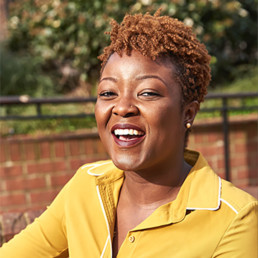
Written by Ayo Awotona
Ayo Awotona specializes in confidence building for girls in education. She does this through programs, workshops, and keynote speeches.
When it comes to speaking about race, white privilege, and colorism; things can often get a tad bit uncomfortable or even awkward, to say the least.
This is understandable. More often than not, these are difficult conversations for most people, and difficult conversations are often characterized by emotions such as fear, anger, frustration, conflict, and other strong dividing — not unifying — emotions. These emotions are often suppressed and can be released rather strongly.
Why is this?
It’s because emotions can run high on both sides, and there is room for the conversation to become quite heated on either or both sides.
This is just one perspective as to why uncomfortable conversations are hard.
So I hope that takes some pressure off of you depending on your curiosity as you first read the title to this blog post 🙂
So let’s dive into this simple (yet, rather complex) question.
How can we raise anti-racist leaders? That is, how can we empower our young people in the world today to make a change by first recognizing racism and challenging it in this seemingly never-ending cycle of systemic oppression?
Before I continue, I must add here that this question is not thrown out to one particular race. This is a question that’s being thrown to each and every one of us reading this (yes! Even me as a Black-British Nigerian woman), because the reality is… change starts with every single one of us. All races and denominations. Change looks different on each and every one of us – rather than a one-size-fits-all approach.
To kick us off with answering this question, it’s important for us to acknowledge/be reminded that children are not colorblind. Children are very much aware of racial differences.
Permit me to simplify how young children learn about race to:
- what they see (both directly and indirectly),
- what they hear, and;
- what they are taught (both at home and in school).
This is really encouraging because it means we (as educators and leaders) play a big role in positively influencing the trajectory of their lives.
Now let’s talk about developing an anti-racism strategy for our young people.
There are different ways to make a change so I’ll give 3 examples of practical things that can be done to help raise anti-racist leaders.
Behavioural Change
As leaders, we ought to know and lead ourselves before we lead others. This means we essentially can’t give what we don’t have. Here are some tips for being intentional about our own growth:
- Listen to other perspectives and de-center yourself
- Boost the voices of the marginalized
- Educate yourself
- Acknowledge your own privilege and propensity for unconscious bias
- Challenge discrimination, even when you feel scared
- Keep the conversation going
Raising Awareness
Sometimes, one of the most powerful things we can offer young people is awareness. This is where we’re focusing their attention on a cause or issue in the world (in this case, related to race). The objective is to increase their understanding – but of course, we must be in a position where we are practicing this ourselves.
Action Planning
A great way to empower young people to take charge of their own learning is through projects – whether this is through achieving tangible or intangible objectives. Action planning activities are designed to support students to build the necessary skills for work and life, as active local and global citizens.
So what could this look like?
Running a workshop where students come up with a project idea to take action on!
During the workshop and overall project duration, it’s important that we support students with their ideas, but steer them in the direction of what is realistic. It is important not to stamp out their creativity, but equally important to ensure students have a clear understanding of how their action plan can be S.M.A.R.T. (Specific. Measurable. Attainable. Relevant. Time-bound)
Some suggested questions to guide your students are:
- What issues do you see happening in your local community that make you upset/angry/you would like to change?
- What issues do you know of happening in your global community? Have you read or seen anything in the news recently?
- If you could change one thing in your local/global community, what would it be?
I strongly believe that for us to move in the right direction of raising anti-racist leaders, change starts with both you and me.
My name is Ayo, Ayo Awotona.
Let’s keep the conversation ALIVE!
Building Leadership Presence through Awareness of Self
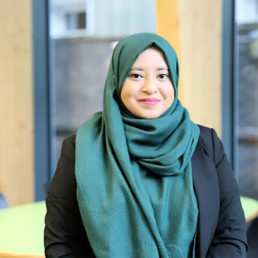
Written by Yamina Bibi
English Teacher and Assistant Headteacher
During the #WomenEd Global Unconference 2021, I spoke about how we can go about tackling our inner critic so that we can limit the influence of it on us as women.
I shared some specific strategies that have really helped me like labelling how I am feeling and seeking support from other women through coaching.
Despite presenting on this, I have really struggled this week to mute my unkind inner critic.
Having started as an AHT role in a new school this year, I have felt like a novice despite being a senior leader for a few years now. I guess in some ways I am because I am new to the system, rules and routines of the school. I know that it’s normal to feel this way but unfortunately this week I have been unable to soothe my inner critic, which tells me that I should be able to do this since I’ve done this job before. This negative self talk then creates a heaviness in my heart and mind and has even stopped me from sleeping well.
These are the unkind things that have played over and over again in my head:
‘You’ve been doing this for a while and you’re still not good.’
‘You can’t even teach properly so what makes you think you can lead?’
‘You were better as a classroom teacher instead of being SLT.’
Through coaching, I have been able to listen to this negative self talk and interrupt my tendency of letting it control me and all I do. I have learned to notice when I go from pressure to stress and acknowledge these thoughts and feelings. I have learned to notice when I am comparing myself to others and telling myself that I’m not good enough because they are better.
However, what I’ve really noticed is that when we’re on social media, it’s so easy to assume that everything and everyone else is doing better than us. It’s easy to believe that other teachers and leaders are superhuman experts who know all there is to know and can do everything and that, in comparison, we can’t do anything.
Let’s be honest. In schools, we are all working hard especially during these challenging times. We are all doing our best for our staff and students but no, we don’t know everything and it’s absolutely fine to say that.
As part of Resilient Leaders Elements™, we learn to share our strengths as well as our areas of development. I’ve been so afraid to do this in the past because I have feared that everyone would know what I knew about myself: I’m a fraud and failure. I now know that being open about my developmental needs with the people I trust and who support me does not make me a failure, it makes me an authentic leader.
Before RLE, I always thought I was an authentic leader but I realised that only allowing people to see my strengths and never sharing my struggles meant that others thought I was a superwoman. Maybe that’s what I wanted then but I definitely don’t want that anymore.
As leaders, we have a duty to model vulnerability and authenticity. True authentic leaders increase their leadership presence by modelling that we all have strengths and areas of development. In sharing this, hopefully others in our sphere of influence will do the same and then we can truly support them and their needs.
Alongside this, we must also pause, reflect and acknowledge our successes. Write it down, read it on paper and read it aloud to ourselves and others. What we are doing is so important and we cannot diminish that because our inner critic is telling us otherwise.
Let’s share all of who we are so that we can continue doing what we love without fear and that unkind inner critic holding us back.
A New School Year. A More Inclusive School Year?

Written by Johan Jensen
Director of All-in Education. His consultancy work includes organisational development, leadership development, strategic communications, product development and diversity & inclusion strategy development.
In July 2020, I urged school leaders to be cautious. In the wake of George Floyd’s brutal murder and the global reactions to racism, I was approached by numerous education institutions who felt bewildered about what to do next. There was certainly a sense of anxiety. It was understandable that organisations wanted to do something and demonstrate activity. I told them, “If you panic into this work, you’ll soon see that you’ll panic out of it”. In my experience this still stands true.
Over the past year, the most powerful discussions that we have had with school leaders have been about self-reflection, especially how we relate and respond to difference in all its forms. The conclusion of most of those conversations is that when we take an honest look at ourselves and the people around us, we don’t like diversity. In fact, I’d go as far as saying that we are naturally geared towards repelling it. It’s called ‘homophily’, the love of same.
Achieving greater diversity and more inclusive schools requires purposeful self-reflection, critique and behaviour and systems change if we are even going to have a fighting chance to create the change that education still so desperately needs.
The majority of the schools, and groups of schools, we’ve worked with have really taken this to heart. It’s been challenging for them. They’ve had to confront uncomfortable truths about themselves and the institutions they’re responsible for. But, they’ve seen how this won’t serve the purpose of creating the next generation of leaders, followers and members of society. This is ground-breaking stuff.
The schools that our team has worked with have taken the first step in this journey, which is to listen. Listening to staff, students and alumni about their experience of belonging, psychological safety, diversity and inclusion. By supporting the senior leaders through coaching, they’ve been able to really listen to what their peers, staff, pupils and former pupils are experiencing and giving them the grounding for creating an even better experience and future.
The strategy that follows these first steps is long term and focuses on values, the business case for changing the way the school operates, the vision for what an inclusive school looks and feels like and how the institution will hold itself accountable in achieving this change.
Some schools have achieved incredible results, with one grammar school recruiting 80% non-white British staff in this year’s September intake. But, achieving greater diversity is only part of the puzzle, achieving inclusion is a totally different game.
How will you create an inclusive school?
We are delighted to be running with RSAcademics a free case study webinar on 13th October to share our experiences and those of some of our clients over the last year, and we look forward to seeing you there to help you continue your thinking on inclusivity.
Please sign up to the webinar here.
Implementing Effective Flexible Working Practices Training for School Leaders
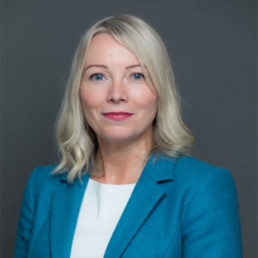
Written by Mandy Coalter
Mandy is the founder of Talent Architects, helping schools be great places to work. She is a published author and was named as one of the Top 10 most influential HR people. She is the former Director of People at United Learning.
Want to better promote inclusive working practices?
Getting more flexible working requests?
Wondering how to retain talent?
Want to enhance your ability to advise on new ways of working, how to adapt, as well as promoting staff wellbeing through flexible working practices?
Our sessions could be for you
The road to a flexible and agile workforce is more important now than ever before, especially in schools. Expanding opportunities for flexible working will be particularly important post-pandemic, where remote and hybrid working have become widespread in some sectors. Creating more scope for flexibility is possible in all roles in a school, promoting a better work-life balance, supporting the diversity and inclusion agenda and addressing the recruitment and retention issues in the sector. Join Timewise, the flexible working experts, and their panellists in a series of webinars, Q&As and drop-in clinics to learn more about what a proactive, whole-school approach is about, starting in October:
Webinar for Heads: Tuesday 05 October at 10am (90 minutes)
Register here https://bit.ly/3jR2pMk
Webinar for School Business Professionals/HR: Wednesday 06 October at 10am (90 minutes)
Register https://bit.ly/2Uc4hXp
Webinar for Governors & Trustees: Tuesday 12 October at 2pm (60 minutes)
Register here https://bit.ly/2VPlc2b

